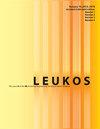Recommended Method for Determining the Correlated Color Temperature and Distance from the Planckian Locus of a Light Source
IF 2.6
2区 工程技术
Q2 CONSTRUCTION & BUILDING TECHNOLOGY
引用次数: 0
Abstract
Correlated color temperature (CCT) is one of the primary metrics used to characterize the visual appearance of light and is most informative when coupled with distance from the Planckian locus (Duv). Given a set of chromaticity coordinates—which are calculated from a light source’s spectral power distribution—it is possible to compute CCT and Duv with varying levels of accuracy. Over the last six decades at least a dozen methods have been proposed to compute CCT while balancing accuracy with calculation complexity. CCT values become inconsistent at some level of precision when calculated using different methods, which in turn can lead to discrepancies in dependent or subsequent calculations used by lighting professionals and may be problematic in software. Although methods are now documented that can provide extremely high accuracy, no consensus body has recommended a preferred method. This analysis examines both the calculation speed and the CCT and Duv accuracy of previously proposed and new methods. With consideration of the calculation accuracy, computational burden, calculation complexity, and considerations of practical implementation, we recommend a recent modification of the Robertson method.确定光源的相关色温和与普朗克轨迹的距离的推荐方法
相关色温(CCT)是用来表征光的视觉外观的主要指标之一,当与距离普朗克轨迹(Duv)相结合时,信息最丰富。给定一组色度坐标(由光源的光谱功率分布计算得到),就有可能以不同的精度计算CCT和Duv。在过去的六十年中,至少有十几种方法被提出来计算CCT,同时平衡精度和计算复杂性。当使用不同的方法计算时,CCT值在某种精度水平上变得不一致,这反过来会导致照明专业人员使用的依赖或后续计算的差异,并可能在软件中出现问题。虽然现在有一些方法可以提供极高的准确性,但没有一致的机构推荐一种首选方法。本文分析了以往提出的方法和新方法的计算速度、CCT和Duv精度。考虑到计算精度、计算量、计算复杂性和实际实现的考虑,我们推荐了最近对Robertson方法的修改。
本文章由计算机程序翻译,如有差异,请以英文原文为准。
求助全文
约1分钟内获得全文
求助全文
来源期刊

Leukos
工程技术-光学
CiteScore
7.60
自引率
5.60%
发文量
19
审稿时长
>12 weeks
期刊介绍:
The Illuminating Engineering Society of North America and our publisher Taylor & Francis make every effort to ensure the accuracy of all the information (the "Content") contained in our publications. However, The Illuminating Engineering Society of North America and our publisher Taylor & Francis, our agents, and our licensors make no representations or warranties whatsoever as to the accuracy, completeness, or suitability for any purpose of the Content. Any opinions and views expressed in this publication are the opinions and views of the authors, and are not the views of or endorsed by The Illuminating Engineering Society of North America and our publisher Taylor & Francis. The accuracy of the Content should not be relied upon and should be independently verified with primary sources of information. The Illuminating Engineering Society of North America and our publisher Taylor & Francis shall not be liable for any losses, actions, claims, proceedings, demands, costs, expenses, damages, and other liabilities whatsoever or howsoever caused arising directly or indirectly in connection with, in relation to, or arising out of the use of the Content. Terms & Conditions of access and use can be found at http://www.tandfonline.com/page/terms-and-conditions .
 求助内容:
求助内容: 应助结果提醒方式:
应助结果提醒方式:


